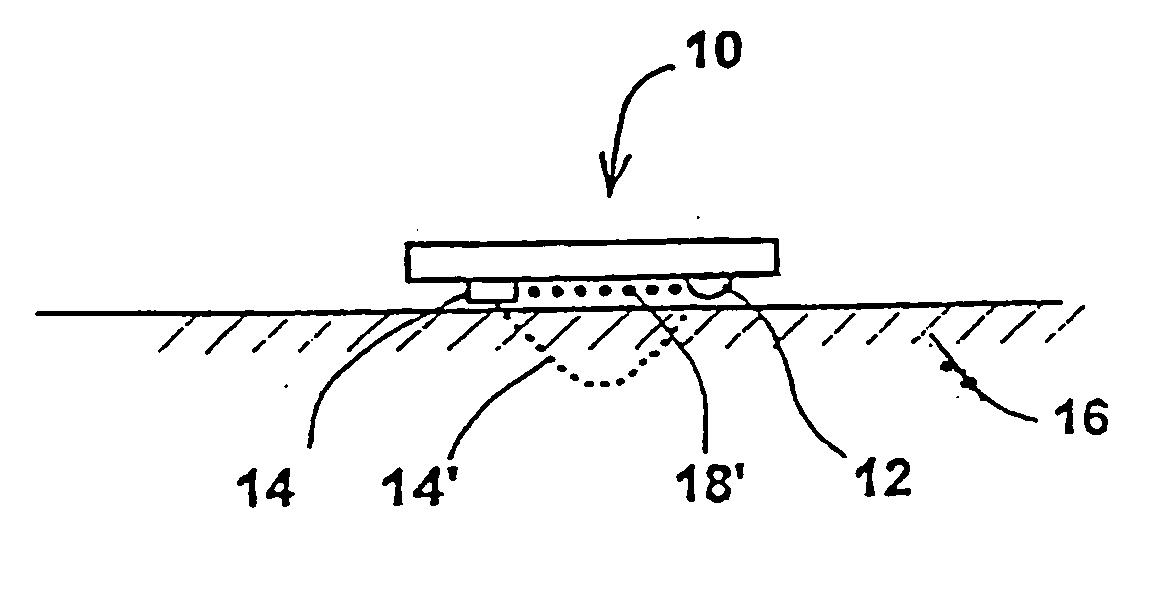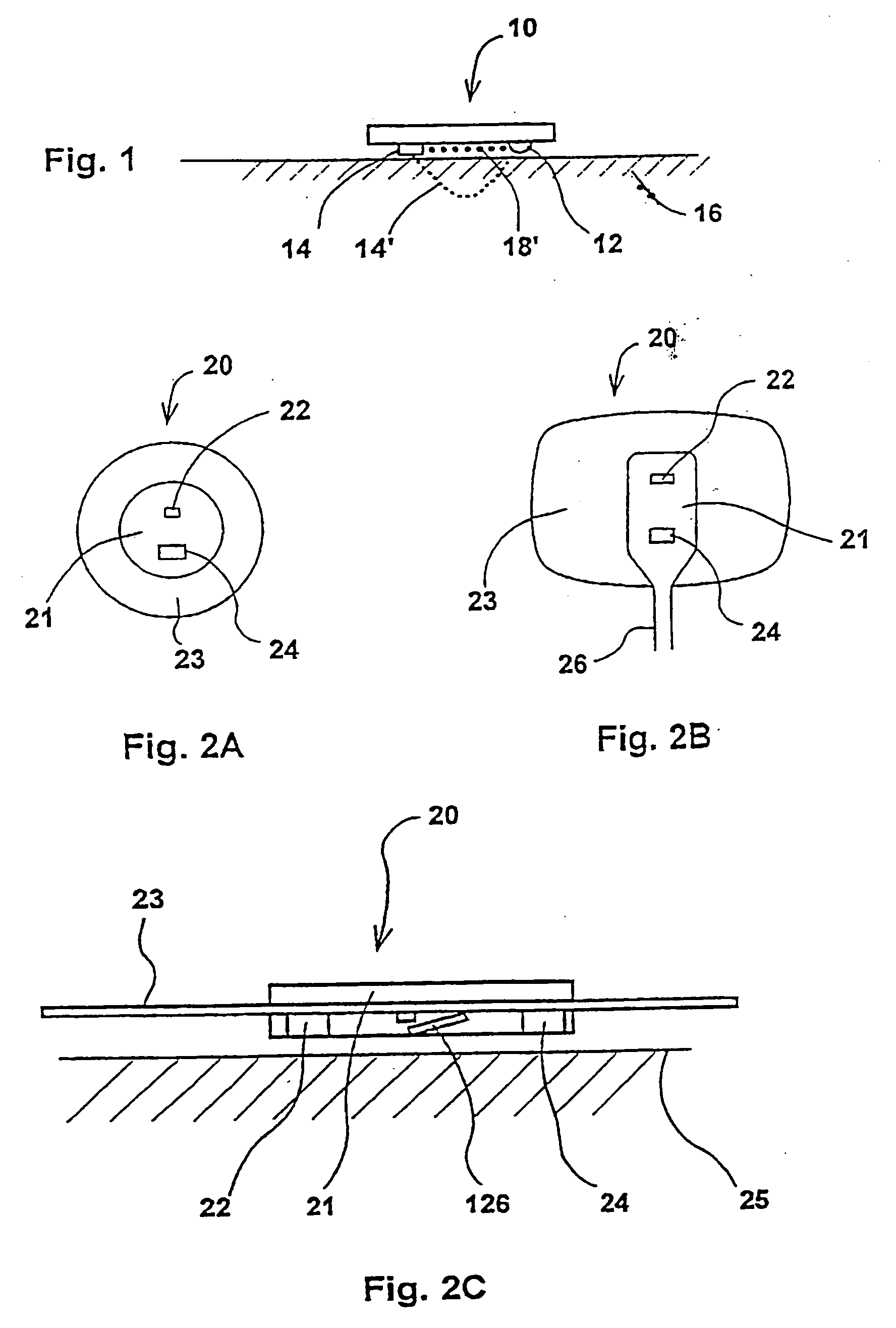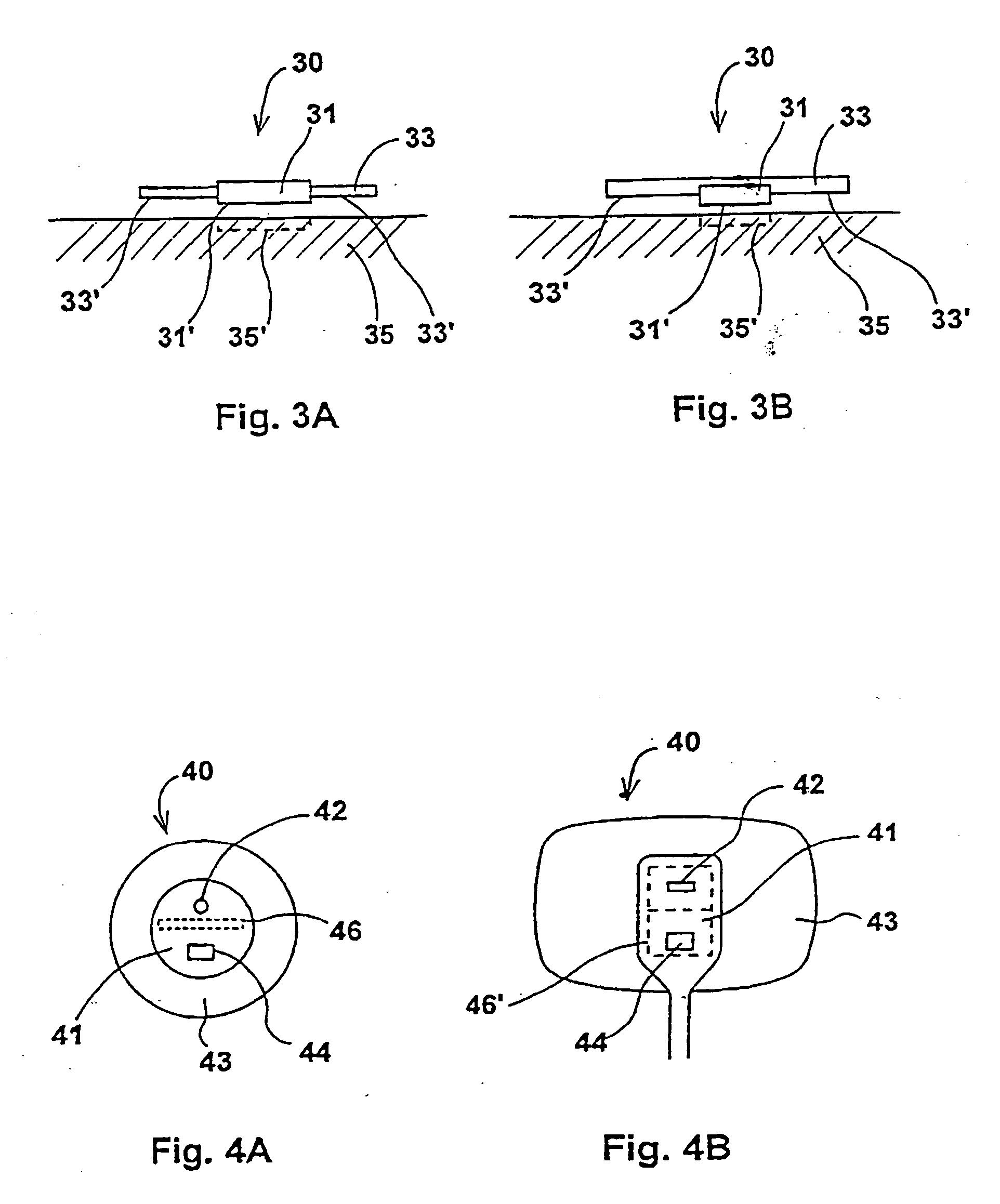Sensor for radiance based diagnostics
a radiance-based diagnostic and sensor technology, applied in the field of radiance-based diagnostic sensors and systems, can solve problems such as inaccurate analysis results and adverse effects on measuremen
- Summary
- Abstract
- Description
- Claims
- Application Information
AI Technical Summary
Benefits of technology
Problems solved by technology
Method used
Image
Examples
Embodiment Construction
[0023] The present invention relates to a sensor for radiance based diagnostics of body tissues, which ensures that only light from a radiance source, which has passed through an examined tissue, is received by the sensor's detector, thereby ensuring higher accuracy of results.
[0024] The invention will be described in reference to reflective pulse oximetry, but it will be appreciated by persons skilled in the art, that the invention relates to any radiance based method of diagnosing body tissues, reflective or other. The radiance source and detector, may, therefore, be situated on the same side of the examined tissue or on opposing sides, according to the diagnostic method used. The terms “radiance source” and “detector”, in the present invention, relate to one or more radiance source or detector. Furthermore, the term “radiance source”, in the present invention, refers to a radiance source which is not limited to visible light but may radiate in any wavelength which is suitable fo...
PUM
 Login to View More
Login to View More Abstract
Description
Claims
Application Information
 Login to View More
Login to View More - R&D
- Intellectual Property
- Life Sciences
- Materials
- Tech Scout
- Unparalleled Data Quality
- Higher Quality Content
- 60% Fewer Hallucinations
Browse by: Latest US Patents, China's latest patents, Technical Efficacy Thesaurus, Application Domain, Technology Topic, Popular Technical Reports.
© 2025 PatSnap. All rights reserved.Legal|Privacy policy|Modern Slavery Act Transparency Statement|Sitemap|About US| Contact US: help@patsnap.com



